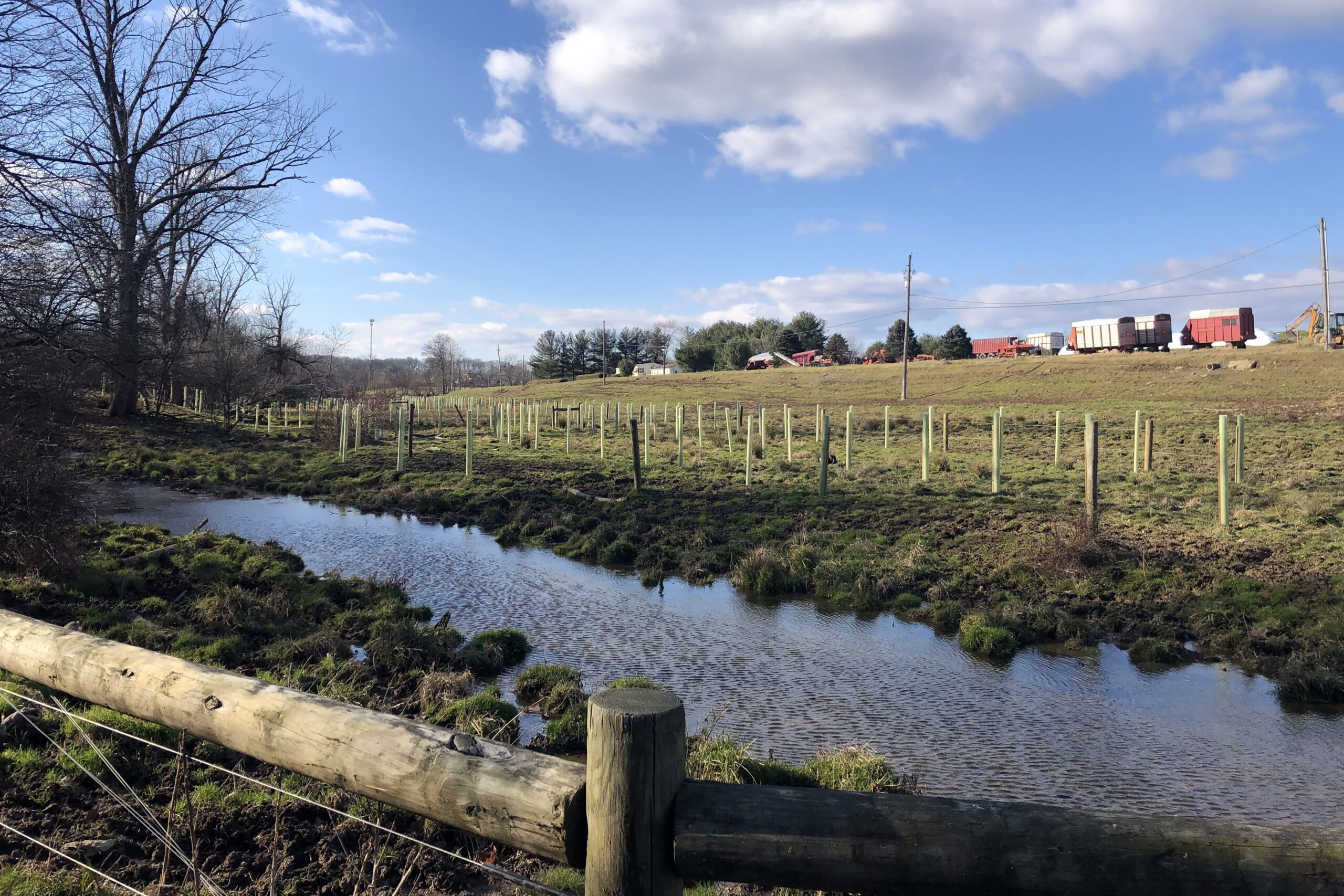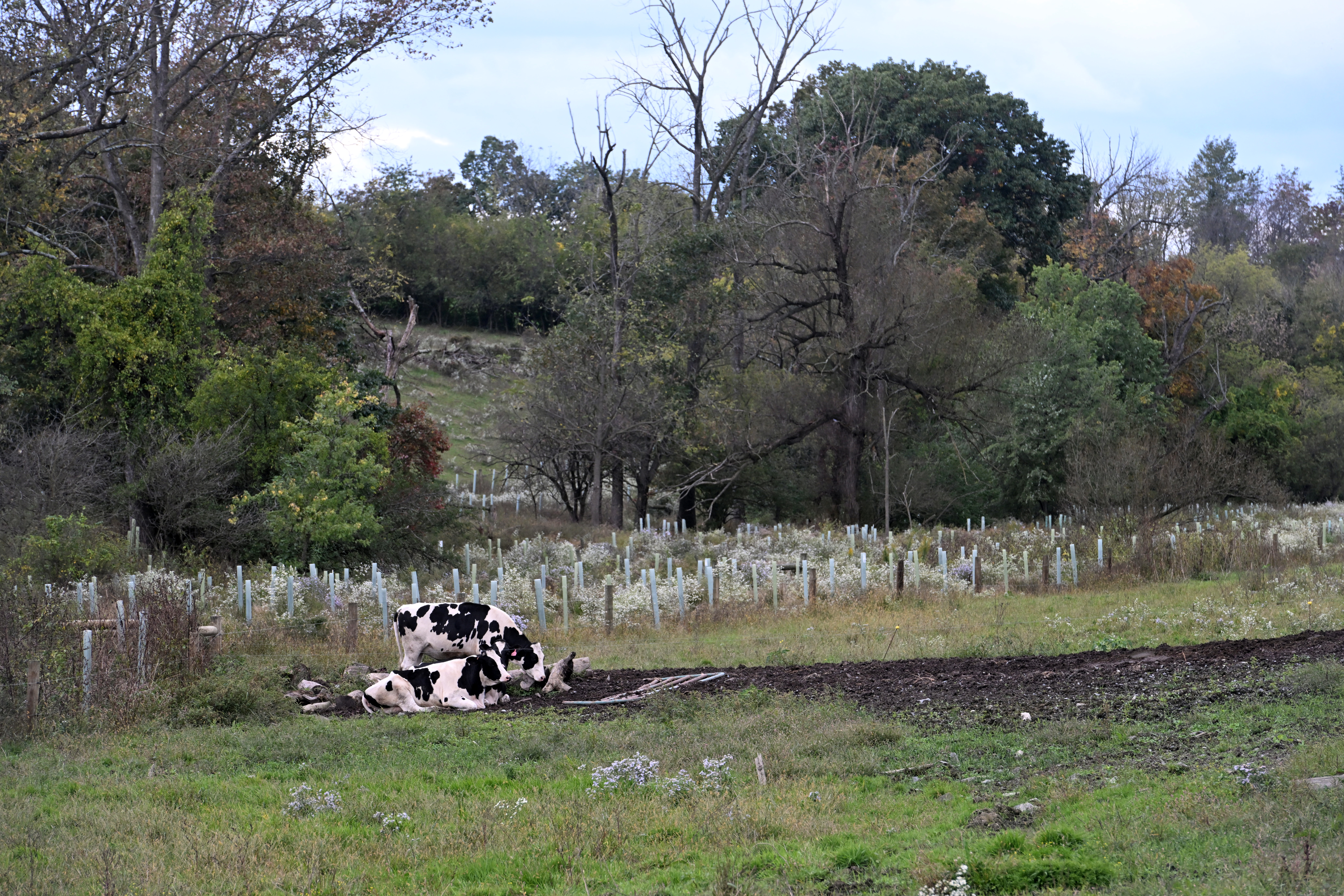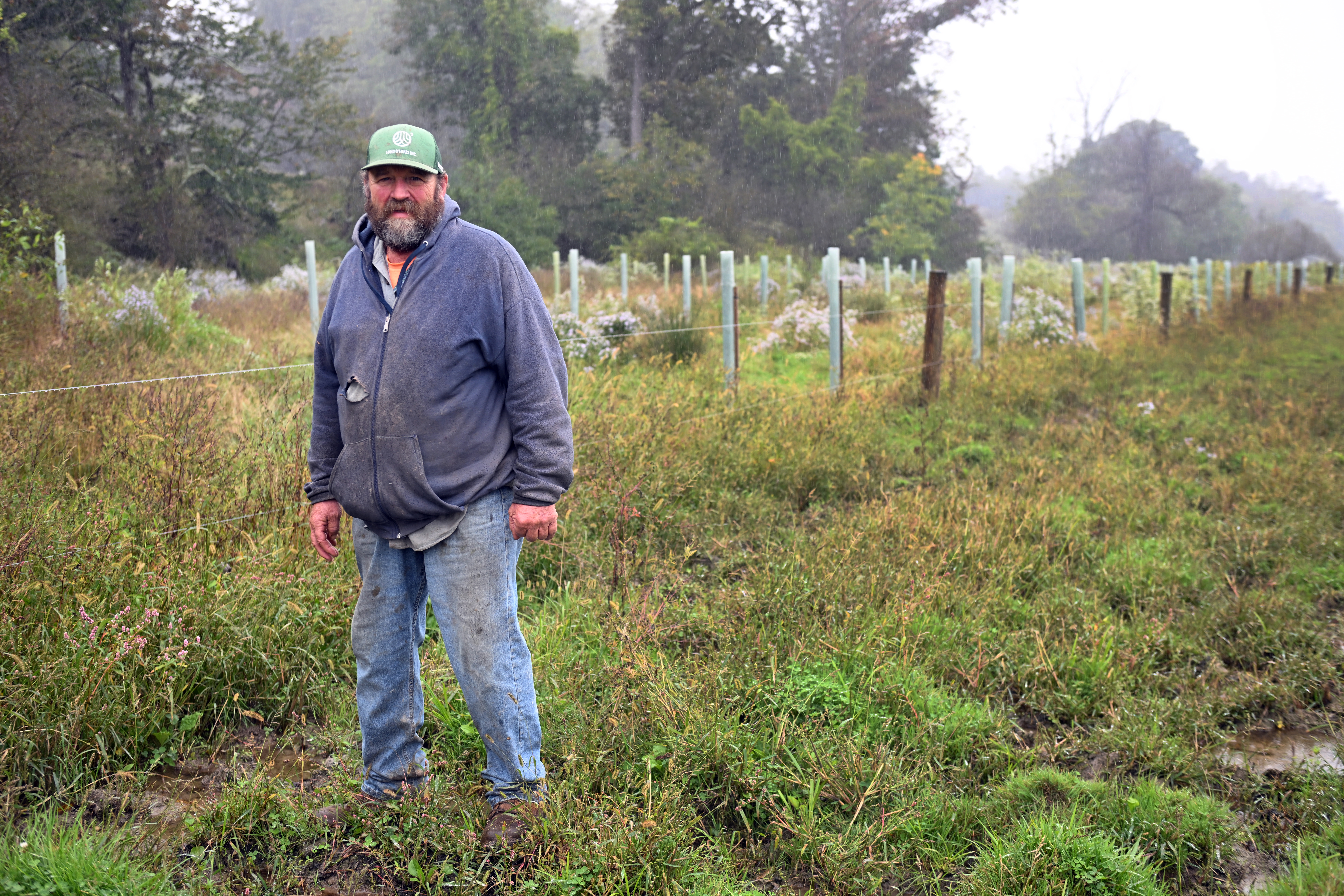It’s still raining.
As late summer turns into fall, the weeks have passed with little sunshine but plenty of clouds and rain.
The steady downpour gives Todd Schroeder a few moments to sit on the front porch of his Perry Township farmhouse. There, across Onyx Cave Road and the meadow beyond, an unnamed tributary to the Maiden Creek flows to the rhythm of the rain.
Although the rain has been steady for days, the creek has remained within its banks.
That hasn’t always been the case. Todd recalls the two times when he saw the creek flood.
“I was here in 1972 when I saw that creek over the road,” he says looking out over the intersection of Onyx Cave Road and Ontelaunee Trail. “We haven’t had that in a while. Yeah, twice in my life. I saw that creek go over that road down there. And the other one was about 20 years ago.”
Back in June 1972 during Tropical Storm Agnes, Todd was just a boy staying on his grandfather’s farm for the summer where he now lives.
“I grew up only two miles from here when the flash flood went through,” he says. “We had a four-inch rainstorm in an hour. And I think the first drenches came in about the first 15 minutes. And that was enough to throw that creek over the banks there. So I say those are the two floods that, you know, I’ll never forget them. Yeah, and I’ll never forget when that creek went over the road down there back in 2006.”
The farm has been in Todd’s family since the 1800s.
“My great, great, great, great grandfather inherited the farm from his aunt,” Todd explains. “My grandfather was born here and grew up here. He started farming four or five miles from here. My mom was born off the property, but when she was 4, my great grandfather got sick, and my grandfather came back and started farming here. That was in 1946 when my grandfather took it over.”
Todd and his family farm 500 acres, 210 located in Perry Township, with 100 acres that surround his farmhouse and outbuildings, and additional acreage that he rents in Windsor and Richmond townships.
When Todd took over the farm in 1998, he put the land into a conservation easement, upholding the family farming tradition in perpetuity that now extends into a third century.
He has also become more willing and more active with other conservation efforts on the farm.
“We were always doing cover crops – cereal grains like triticale and wheat,” he says. “We’ll also mix in some rye grass at times that will be harvested from April through May.”
He learned of a three-year cover crop incentive program from the Stroud Water Research Center and enrolled.
Wills Curley, Watershed Restoration Project Coordinator for the Stroud Center, visited the farm to talk with Todd about the cover crops program.
“We originally worked with Todd and his brother providing reimbursements for winter cover crops through an incentive program we’ve had going for several years now,” Curley wrote in an email.
Curley asked Todd whether he had any interest in adding a riparian buffer and upgrading the exclusion fencing along the creek.
He simply said, “Yes,” Curley recalled, and the Stroud Center moved forward with the installation a few months later.
“Having riparian buffers on the landscape is an incredibly important step toward obtaining long-term goals of improved water quality through sediment and chemical capture,” Curley said.
“But additionally,” he explained, “there is added value to landowners and farmers interested in improving their land and potential wildlife habitat,” he continued. “By simply planting native trees on either side of a small stream or tributary one can greatly improve the number of aquatic insects, fish, birds, small mammals and deer in addition to all the other benefits of reduced erosion as well as less nitrogen, phosphorous and other harmful chemicals leeching downstream. In combination with livestock exclusion fencing there can be major improvements gained in the overall health and quality of the stream and surrounding watershed.”
The Stroud Center planted over 850 native trees and shrubs of several dozen species comprised mostly of red maple, sycamore, willow, dogwood, sweetgum, and elderberry.
“We planted wetland obligate species that can tolerate those soils and moisture content,” Curley said.
Where once the pasture went right up against the stream bank, there is now a riparian buffer that protects the stream.
And with a year of buffer growth, the view across the road has changed remarkably.

Over 850 native trees and shrubs make up the Schroeder’s riparian buffer.

In addition to the native trees, fencing has also been erected to exclude Schroeder’s herd from the creek.
This unnamed tributary to the Maiden Creek, which is on the Pennsylvania Department of Environmental Protection’s impaired waters list due to nutrient and sediment runoff, is now offering further protection to the drinking water supply that Lake Ontelaunee provides downstream to Reading and surrounding municipalities.
Todd is thinking of other projects on the farm that will help to preserve the watershed and make his farm more efficient. High on the list is getting his dry manure storage under roof.
Todd looks around through the rain and mist to the cornfields on this side of Onyx Cave Road, where harvesting of the crops for livestock feed has begun.
“Yesterday, we did 60 acres of silage,” Todd says. “We might have something left over to sell this year with a change in weather where it started to rain in the middle of June. Last year was dry. We didn’t sell any.”
It’s always a good year when there’s enough feed left over to sell, he says.
This indeed has been a good year.

